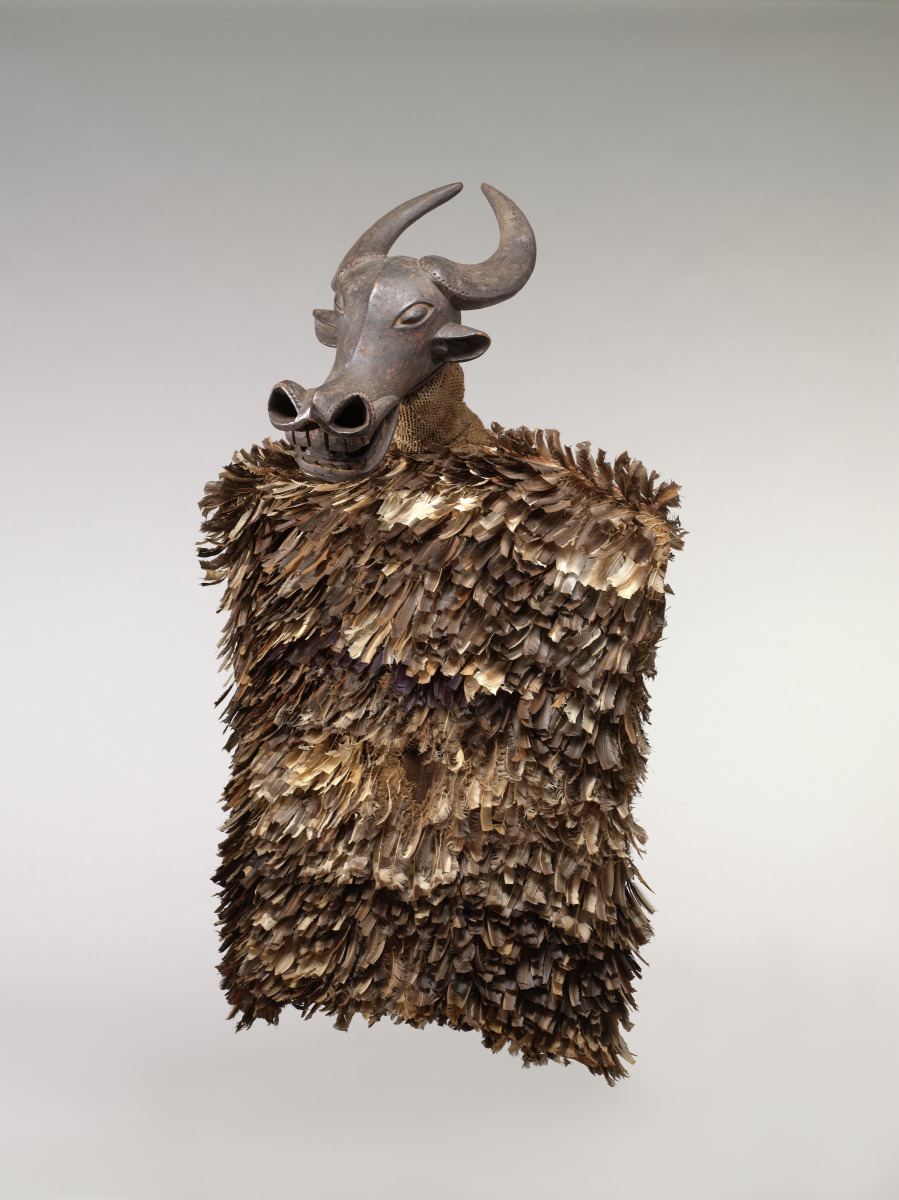
Buffalo Mask and Feather Costume (Primary Title)
Bushcow Mask and Feather Costume (Former Title)
Unknown (Artist)
The Bamum live in a plateau region of Cameroon commonly known as the Grassfields. Their king is known as the fon. A retinue of other officials and counselors form what is known as the kwifoyn, an organization that assists and counterbalances the rule of the fon. They are also responsible for upholding community social values. Members of the kwifoyn perform in dramatic masking ceremonies on various special occasions, including events of state, celebrating the harvest, and commemorating the dead.
The African Cape Buffalo has been adopted as a symbol of royalty in the Grassfields kingdoms in recognition of its great strength and cunning. Images of buffalo appear on royal jewelry, on thrones, as palace decoration, and on masks. The right to use the buffalo image is bestowed by the king as a sign of high rank or authority within the community. Intelligent and normally peacefully, the African Cape Buffalo becomes fierce when threatened. The watchful eyes, perked ears, and flaring nostrils on this expressive mask indicate the artist’s awareness of the animal’s latent power and ferocity. The feather costume denotes that this mask played the role of messenger, announcing decrees in the marketplace and informing the crown about the subject of a masquerade that is about to take place, so they will know whether to celebrate or to be solemn.
Some object records are not complete and do not reflect VMFA's full and current knowledge. VMFA makes routine updates as records are reviewed and enhanced.

